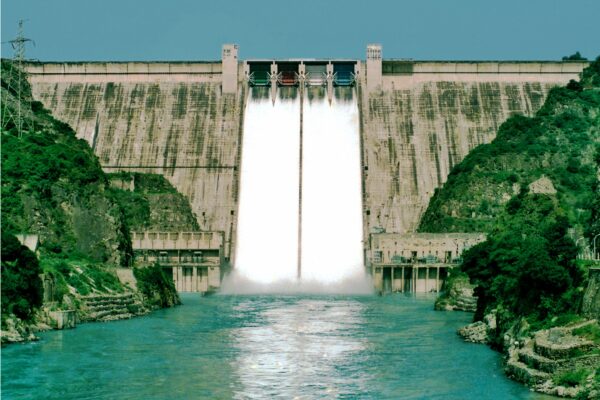News
Australian Firm to Assess Feasibility of Deep Dredging at Bhakra Reservoir

According to the BBMB Chairman, silt accumulation has reduced the reservoir’s capacity by nearly 25% over the past few years.
The Bhakra Beas Management Board (BBMB) has approached an Australian firm to explore the feasibility of deep dredging as a solution to the growing problem of silt accumulation in the Bhakra Dam reservoir. BBMB Chairman Manoj Tripathi stated that sedimentation has decreased the reservoir’s capacity by approximately 25% in recent years. He added, “To assess the feasibility of deep dredging without lowering water levels, the Australian firm will visit the dam next week.”
No Indian firm currently undertakes deep dredging, and sediment accumulation at the far end of the reservoir poses a significant challenge. An alternative method involves dry excavation when the water level is reduced or intentionally lowered. The reservoir’s water level, presently capped at the permissible maximum of 1,680 feet, could be reduced to 1,462 feet, providing a larger area for sediment removal.
Tripathi further explained that dry excavation was planned last year, but objections from the Himachal Pradesh government regarding the bidding process led to its suspension. The dam and reservoir span across the districts of Bilaspur and Una in Himachal Pradesh. “We have discussed the matter at the highest level with the state government, and they have agreed to the silt removal auction, which could be conducted in January or February, potentially generating hundreds of crores in revenue,” he noted.
The BBMB Chairman also mentioned that discussions were recently held with the Secretary of the Ministry of Jal Shakti regarding sediment removal, and a policy is being formulated. Given the mountainous terrain, narrow access roads, and irregular shapes and depths of reservoirs, dredging and excavation are expected to be long and highly technical undertakings.
The Bhakra reservoir, known as Gobind Sagar, has an estimated gross storage capacity of 9.8 billion cubic meters (BCM), including dead storage capacity. According to the Central Water Commission, the active storage at full reservoir level currently stands at 6.2 BCM. Construction of the dam began in 1948 and it was commissioned in 1963. It has an installed capacity of 1,379 megawatts and provides irrigation for 676,000 hectares.
Stretching over 90 kilometers with a maximum depth of 534 feet, the Gobind Sagar reservoir’s catchment area includes large tracts of barren and partially sandy terrain, contributing to significant sediment and debris inflow. BBMB officials estimate that 38–39 million cubic meters (MCM) of silt enter the reservoir annually, exceeding the estimated inflow rate of 33–34 MCM.
Experts have warned that if corrective measures are not implemented, sediment inflow could reduce the reservoir’s capacity by 35–40% by 2050.
